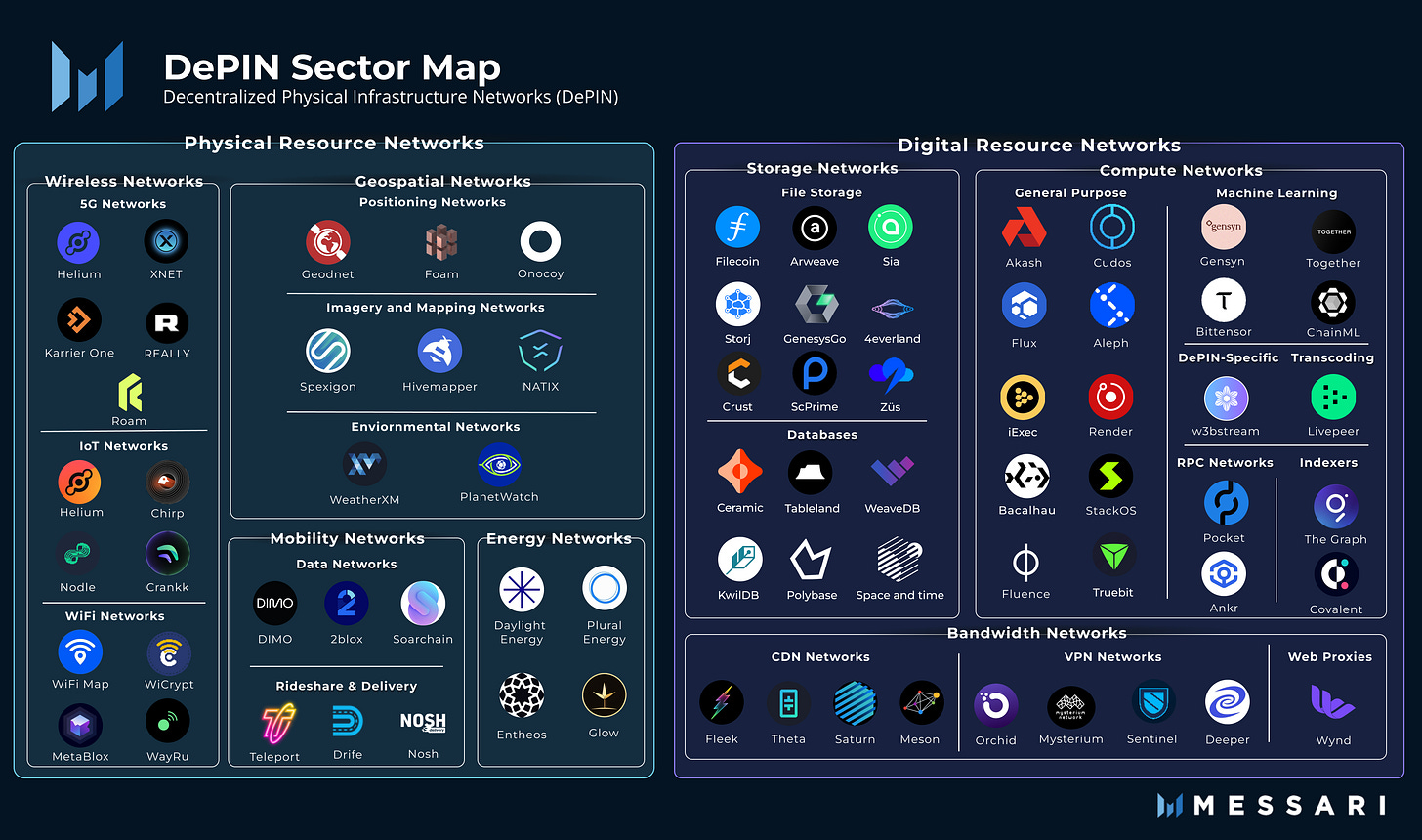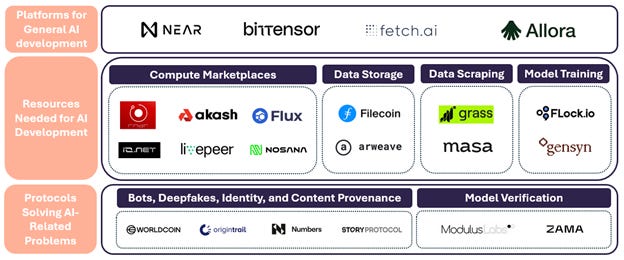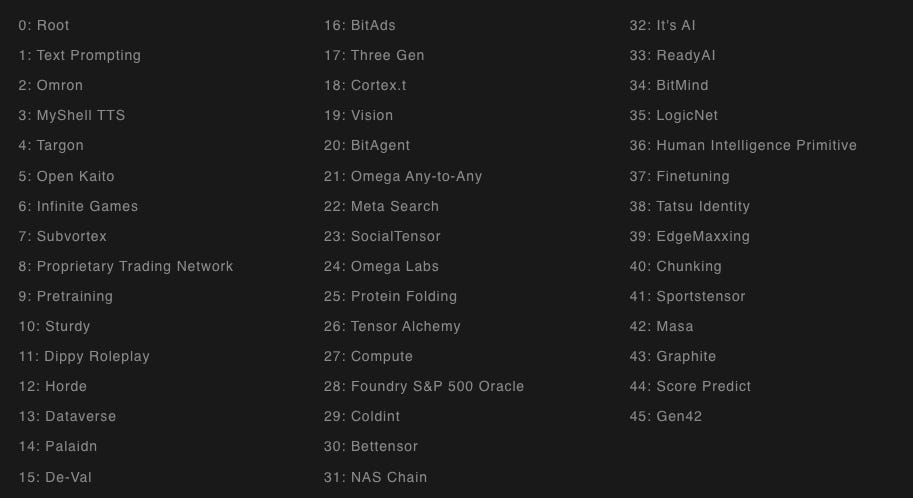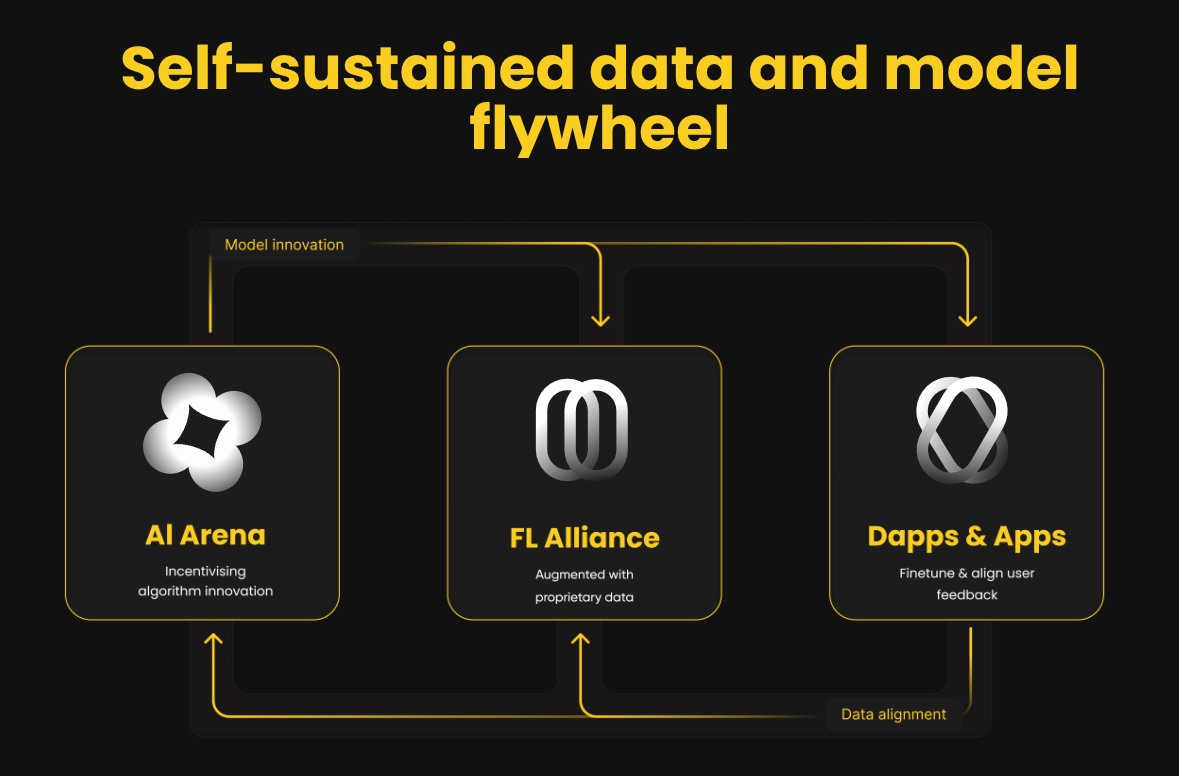Decentralized Physical Infrastructure Networks (DePIN) - The Why, What & How?
This post is going to act as a deep dive into why we need (or don't) DePINs, what they are and how can one contribute to these networks. We also dive into the Crypto x AI space.
Background
Since the beginning of time, production of commodities of any kind, physical or digital, have always been under the control of major centralized players and its regulation under the Governments of various countries.
Be it household appliances like a refrigerator, dishwasher, washer-dryer or even some of the technological devices we use like computers, laptops, mobile devices. If we take a step further, digital commodities like our data, internet, compute, etc. are all held and controlled by the big tech companies. This makes it extremely centralized - leaving the power of controlling physical and digital commodities in the hands of a few very powerful, rich & ambitious centralized entities.
While this might not matter to a lot of people, the reason it could be a problem (and probably already is), is because in today’s time there’s just so much that can be done using one’s data - the biggest thing being these centralized entities could use your personal data to train large scale AI models and you would never know that your data is being fed into these models for training. Taking a step further, big tech corporations possess a lot of resources - financial & physical resources that they could potentially control the supply & demand of compute, or any digital or physical commodity for that matter.
With OpenAI’s ChatGPT release in 2022, the AI cycle saw tremendous growth because for one of the first times, people now started using AI in their daily life - even those who had no technological background. But there was a pressing question with the launch of ChatGPT -
What data was used to train ChatGPT?
What are the controls behind ChatGPT?
What kind of compute was used to actually build the model?
How is user privacy preserved?
And most importantly, what does this model powering ChatGPT look like?
ChatGPT is probably one of the coolest applications of our time, these lingering questions remained unanswered to a very large degree. And it was around this time that a lot of projects in the blockchain world, that were trying to solve these issues started picking up and gaining traction.
The USP of these projects was simple!
The power to build, contribute and create AI never stayed in the hands of a select few individuals or entities. This is what Decentralized AI is. However, with Decentralized AI’s growth, another larger space called Decentralized Physical Infrastructure Networks (commonly called DePIN) gained traction. The goal of such networks was to power the decentralization of any physical or digital asset - compute, internet bandwidth, data, AI, and everything else you can think of.
And this gave rise to the DePIN sector picking up and Decentralized AI is usually categorized under this larger sector.
Before we dive into this post, let me preface it by saying NOT everything in this world needs to decentralized. Some commodities and concepts are better left centralized. While decentralization might seem appealing, it could cause more troubles than benefits for certain usecases.
Why DePIN?
Let’s take one of the massive cloud providers for example. These cloud platforms provide various services like compute, orchestration, analytics tools, data storage & retrieval and a lot more. While AWS operates in various availability zones, there have been times where various services in a certain availability zone or availability zones itself be unavailable for a certain duration. Since Amazon is the one entity that controls AWS, if some of its data centres are down, then it could cause massive disruption to services across the globe. There’s a single point of failure.
Besides, with using such centralized solutions, we cannot be certain about what data they’re capturing about our usage patterns or whether our data itself is actually safe or not.
Finally, the fact that one single entity can possess such massive control over the world’s digital compute resources doesn’t really seem great.
DePIN solves the issues of (1) single points of failures, (2) data privacy and (3) being certain that the power for any physical or digital resource isn’t with a single entity.
But here’s the thing, not every physical or digital needs to be decentralized. Before using (or building) a DePIN network the first question we need to ask is “Does this physical or digital infrastructure really need to be Decentralized?”
Not everything is worth the time & effort decentralizing it. It's like AI & ML - in 2017/2018, people started using it to literally do anything and everything, even when it was not needed.
If the answer to the question of whether it really needs to be Decentralized is yes, then the next question to ask would be why does the physical or digital infrastructure need to be Decentralized? Assuming the answer to these questions are yes, the biggest benefit of having physical or digital commodities decentralized would be costs and single points of failure on centralised infrastructure providers. There are times we might need to use S3 buckets to store/get data, or EC2 instances for compute on AWS, but if AWS' central servers are down then there’s no way to do either. In the Decentralized world, if your data is on IPFS, and you use Akash for compute, then even if one node is down on both platforms, you could still accomplish your tasks due to the decentralisation component.
What is DePIN?
Decentralized Physical Infrastructure Networks or more commonly known as DePIN is a term for networks that make use of the Blockchain technology to not only decentralize ownership and control of real world physical infrastructure, but also to help incentivize those that contribute some physical or digital resource to the network, thereby trying to drive demand to such networks.
DePIN is usually categorized into 2 parts -
Physical Resource Networks (PRN) - WiFi, Energy, Internet Connectivity, Geospatial domains are a few domain that come under this category.
Digital Resource Networks (DRN) - Storage, Data, Compute, AI, Bandwidth domains come under this category.
But what really makes up a PRN or a DRN? According to Messari’s report written by
on the DePIN Sector, PRNs and DRNs are “characterized by the hardware, resources, goods, and services they offer.” The DePIN Sector Map below is an image pulled from Messari’s DePIN Report that classifies projects into PRNs & DRNS and furthermore into buckets based on their use cases.DISCLAIMER : The Messari DePIN report (and the image below) are from 2023 and a year is a lot in the blockchain space. While most of these projects still exist with some of them thriving more than ever, some of them might have shut down or pivoted.

For the purposes of this post and the theme of my newsletter being AI, it would be unfair on my part to not cover some specific AI components in the DePIN sector.
Based on the above Sector Map, anything AI, compute or Data related fall in the Digital Resource Network category of DePIN. Let’s dive a little deeper into the AI side of DRNs.

The image above is from Grayscale’s article “AI Is Coming - Crypto Can Help Make It Right” written by William Ogden Moore. This article talks about various things like what components of the Crypto x AI stack is currently decentralized and what projects fall into each of these components.
As you can see, each of the aspects like AI Model development, creation, training, data storage, data creation/curation, compute and model verification all have projects contributing to decentralization of these aspects. In the interest of the theme of the newsletter I’m going to be diving into some of the projects in the Crypto x AI space mentioned above.
What is Crypto x AI
Crypto x AI is a term given to the stack that comprises of Decentralized AI Networks, Decentralized Compute Networks & Decentralized Data Networks, all of which are a part of the DePIN sector. In this section, we will look into each of these stacks and dive a little bit into a few projects in this space that have been making the rounds.
Decentrazlied AI
Decentralized AI (dAI) is generally a term given to projects that contribute towards open model building, training and evaluation. Anyone across the world that’s interested in building open source models that align with certain topics defined by these dAI networks can contribute their models to such networks. But what’s the incentive?
The incentive is that you get paid to contribute models to such networks, depending on how well your model performs based on a given set of parameters or evaluation criteria. The incentive is in cryptocurrencies, but you can swap that for fiat currencies.
2 Projects Making the waves in this space right now are -
BitTensor - According to their website “Bittensor Is Pioneering The Decentralized Production Of Artificial Intelligence.” But in a nutshell, BitTensor enables network participants to create AI (or any digital commodity) based on a particular topic (called subnets). Each subnet deals with a certain topic and people can contribute intelligence, data or compute based on the topic of the subnet. People that contribute a digital commodity are called “miners”. There’s a set of people that evaluate the models and digital commodities, and their performances based on a criteria set by the subnet owner. Evaluators on Bittensor are called “validators.”

Source: Taostats - Topics that you can contribute to on Bittensor FLock - According to their website, Flock helps with “Federated Machine Learning On the Blockchain. Local Data, Collaborative Training, Onchain Governance, To Accelerate Decentralised AI.” In a nutshell, FLock enables Federated Learning on the Blockchain where anyone can contribute models around a certain topic and FLock’s FL aspect takes into consideration all models and mashes them to get one aggregated model that reflects all the models. The best part here is that the model goes to the data, instead of the data coming to the model, thereby allowing people to perhaps make use of Federated Learning’s privacy aspect to build more robust AI models with private, use case specific data. FLock currently runs Kaggle like competitions that you can participate in on their website.
Allora - According to their website Allora is “Collective knowledge creates the best inferences. Allora is self-improving decentralized intelligence built by the community.” Allora operates in a similar manner like BitTensor. You have topic creators, model builders and evaluators.
Decentralized Compute
Decentralized Compute Networks are blockchain networks that enable the decentralization of computational hardware required to perform various compute tasks from model training to general purpose compute like hosting websites, running simulations, etc. Just like every other DePIN project, you have producers and consumers.
In the case of Decentralized Compute, producers are those that offer their (unused) compute resources/hardware to such networks and consumers are those that make use of these resources. Payments are done in crypto and majority of it goes to the compute providers (barring a small fee). However, compute providers are generally also incentivized directly by the network/project to contribute high performance compute like H100s, A100s, A6000s, etc.
2 Projects making the waves in this space right now -
Akash Network - Akash network is a decentralized compute marketplace where anyone can contribute compute from across the world and anyone from across the world can use these compute networks. According to their website “Akash is an open network that lets users buy and sell computing resources securely and efficiently. Purpose-built for public utility.” Akash also has something called Akash Chat where you can chat with Open Source SoTA models and ask your questions. Oh, did you know that using an H100 on Akash costs you 75-80% lesser than using one on GCP, AWS or Azure?
Hyperbolic - According to their website, Hyperbolic provides “Computing Power for All.” It works similar to Akash that acts as a marketplace. You can rent GPUs, get inference APIs to access some of the Open Source SoTA models and supply GPUs too.
Decentralized Data Networks
Decentralized Data Networks are networks/projects that allow the decentralization of data creation, curation and gathering. While it might be hard for individuals to curate/create a dataset with billions of rows, Decentralized Data Networks allows people to pool their bandwidth together to gather data in a decentralized manner where each person would run a node of sorts to pass requests to various sources through those nodes.
With Decentralized Data Network projects, those that provide data (or infrastructure to gather data), are incentivized directly by the project in their native cryptocurrency.
Some projects making the waves in this space are -
Masa - According to their website “Masa is a decentralized AI network, where people earn by contributing data. AI developers can build anything, anywhere with the world’s data.” Masa is a project that allows people to run nodes, gather data and contribute them to the Masa Network. The interesting thing about Masa is that they also have a BitTensor subnet. People essentially write code that gathers data from various sources like X, Reddit, Web, Telegram, Discord, etc. and the code is then used to contribute the data when prompted by the network.
Grass Network - According to their website Grass allows you to “Earn A Stake In The AI Revolution. Get Rewarded for Your Unused Internet.” This seems a little too generic, so let’s break it down. Grass allows users to run nodes on their laptops or desktops that allow you to contribute your unused internet towards Grass’ data creation/curation tasks. An example of one such task is Grass Open sourcing their 600M+ data points dataset related to Reddit posts.
How Does DePIN Work?
While this is a tough question to answer, DePIN usually involves 2 aspects - producers and consumers.
Producers are those that provide a digital or physical resource to a certain blockchain network. While they get paid by those that use these networks and more specifically their resource, they also get paid directly by the blockchain through additional incentive programs.
Consumers are those that want to consume a digital or physical resource from a certain blockchain network. These participants usually pay the network & the producer in cryptocurrency to make use of such services.
Now depending on what resource you’re contributing the technical weight and know how might differ. For example - contributing ML models on Bittensor is different from contributing compute resources on Akash and so on.
Every blockchain is built in its own way to optimize for various aspects and the technical lift could be different.
But in a nutshell, every DePIN project runs based on its consumer-producer cycle along with some consensus mechanisms to help secure the blockchain networks.
Conclusion
DePIN might be one of the most crucial movements of our time, especially with the rise in AI & concerns around its centralization. DePIN also feels like the one domain that could potentially push for mass adoption of blockchain technology. People are slowly coming to terms with GameFi not being that narrative that leads to mass adoption of Blockchains. With no support from the core group, i.e. the gamers, it doesn't seem like gaming is that narrative. So naturally people started looking at other narratives and there it was all this while, DePIN.
What is different this time though is you have so many DePIN projects, serving multiple verticals, and a lot of them actually work and already have adoption. Filecoin, The Graph for data storage, Helium is Decentralizing mobile network connectivity, Bittensor and FLock Decentralizing AI, and obviously Akash Decentralizing Compute.
These are projects that have been in the space for a while and survived through multiple cycles, so obviously there is something here. And now that the DePIN narrative is the trending thing amongst VCs and crypto Twitter, people are actually looking at these projects more closely. Personally, I wouldn't bet on any other broader segment to bring in mass adoption of Blockchain technology. Which vertical inside the DePIN sector can do that, I'm not sure but DePIN would be the horse I bet on for mass adoption and I think a lot of people are slowly realizing that as well.
The problem today with most DePIN projects is that there’s a chicken and egg problem. There are a good amount of producers but not sufficient consumers and more producers don’t want to come in until there’s more consumers. This increases token inflation, thereby diluting the rewards for procuders, thereby disincentivizing them to use such networks to contribute their physical or digital resources.
A lot of this also has to do with outreach and skepticism. Not everyone understands how to use blockchains and are intimated by it. However, DePIN’s still growing.
Product maturity is one of the biggest factors driving the growth of the DePIN sector. Projects in this space have been around for a while, building real use cases and have real users using these platforms. And with product maturity, people are now able to build on top of these projects. The other thing the incentives for providers or contributors. The fact that you can contribute something you own but don't have a need for at that moment, and get paid to do that is pretty cool. So product maturity + incentivized contributions in multiple DePIN verticals is really propelling this sector.
Hopefully with time, people get more comfortable using blockchains or someone builds tools around simpler UX for the web2 audience to use these DePIN networks without them realizing. But the outreach and growth of this space does seem to be bringing newer people into this space.
However, only time will tell where this space goes. Until then, I’m going to do my part to share as much as I can to propel this domain forward!



Akash has an amazing use case, offering graphic cards as a service is essential for training models on demand. Super excited to see what Hyperbolic does as well, great article!